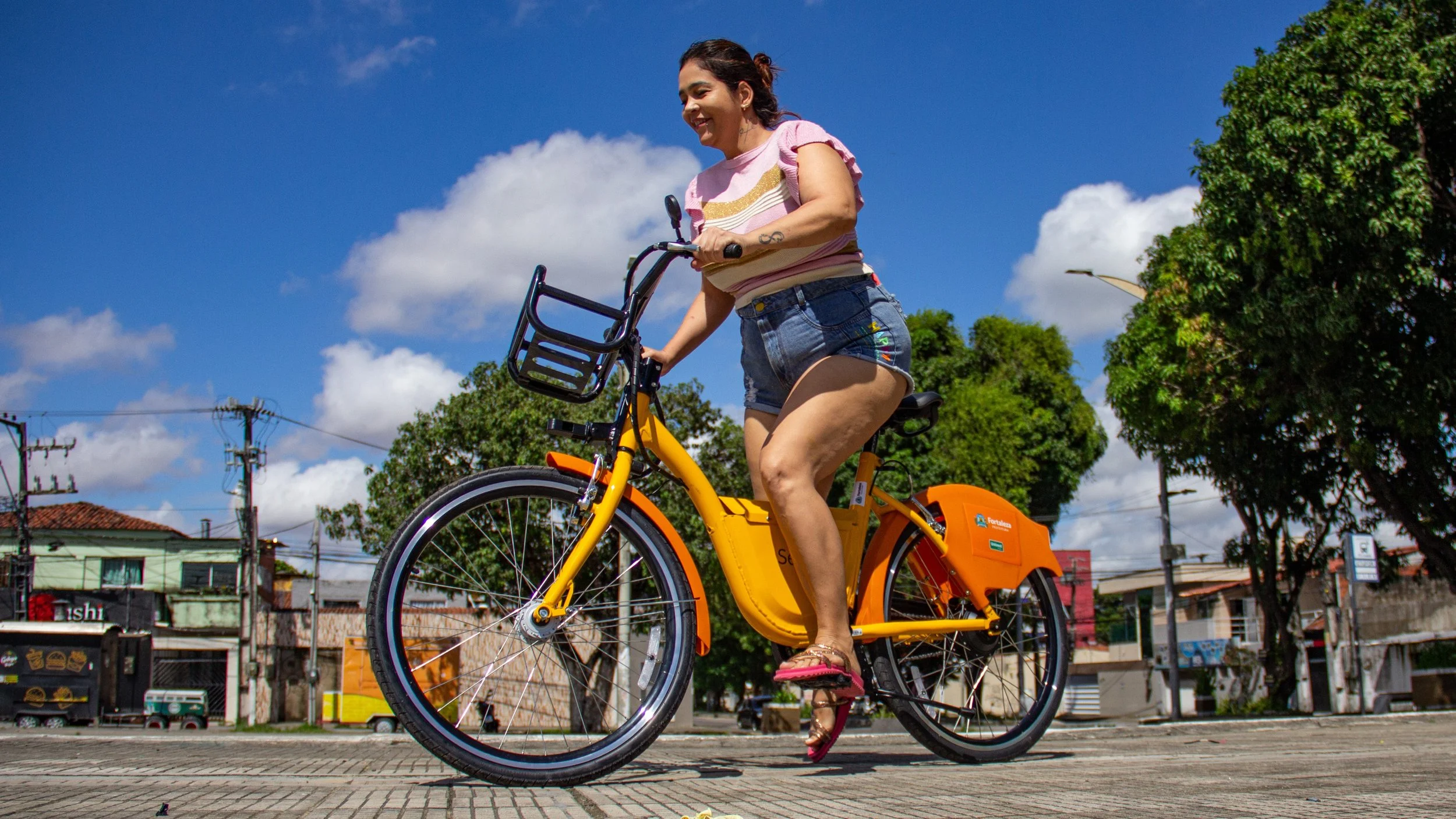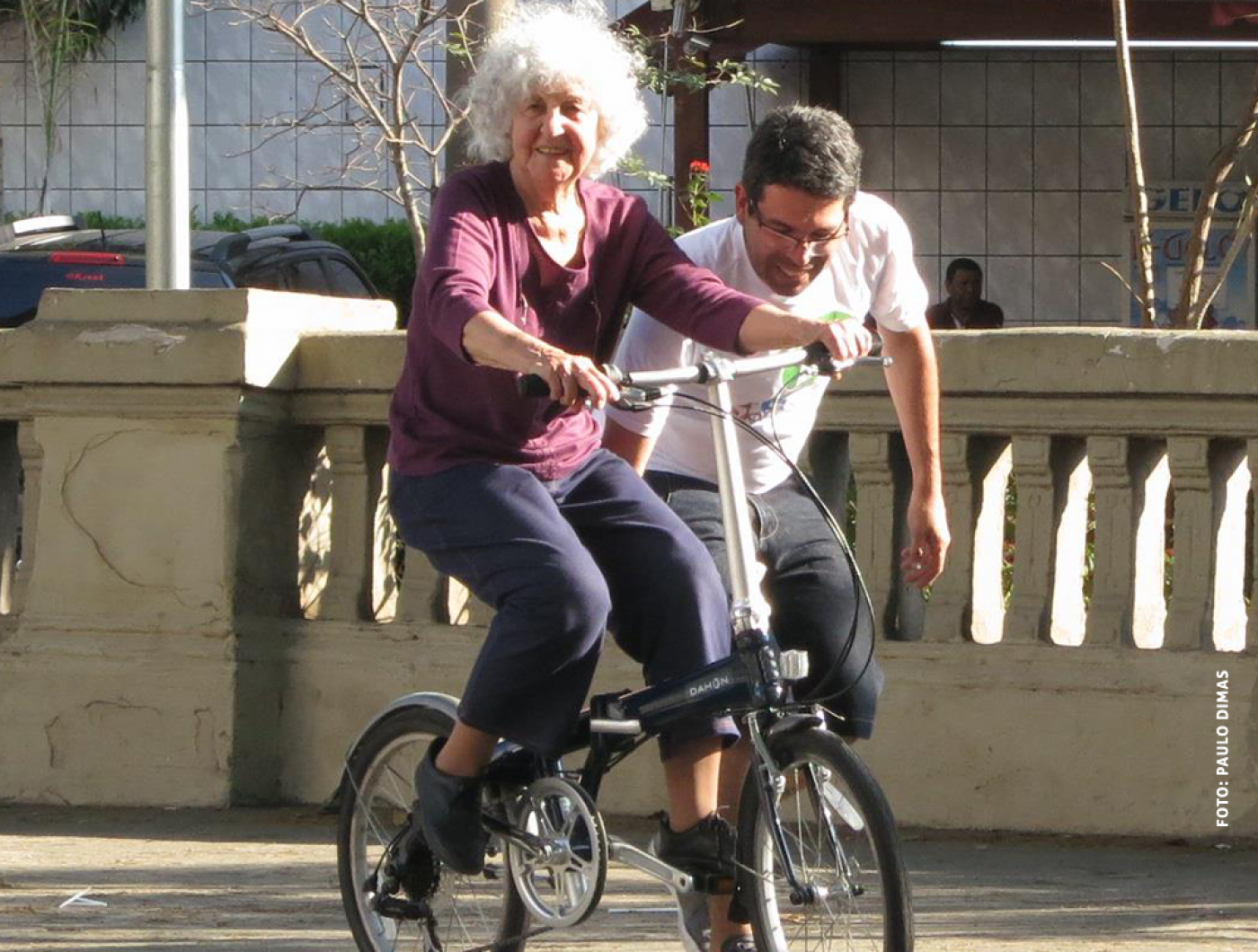Bike sharing in Brazil
After Italy, the UK and Poland, Qucit has set down in Brazil to find out how micromobility works there. Qucit met several experts in the field of micromobility to give you a complete picture of bike-sharing in this country of immense potential.
Tembici, an operator and supplier of shared bike systems in Latin America, Logit, a Brazilian transport consultancy firm, and the Fortaleza local authority have shared their insights with you.
I- Tembici, an operator that makes micromobility accessible to as many people as possible
Mathilde, public affairs officer for Qucit, had the pleasure of meeting Mauricio Villar, founder of Tembici, a company providing and operating bike-sharing systems in Brazil. This active mobility enthusiast tells us the story of his company: "It all started with a university bike-sharing project in São Paulo in 2009. In 2011, the project was transformed into a start-up called CompartiBike, from the verb "compartilhar", which means to share, and therefore to share bikes. In 2017, the company continued to grow, reaching 500 bikes in operation in several cities in the state of São Paulo."
Following the acquisition of an existing project, "CompartiBike" became Tembici. Backed by one of Brazil's largest banks, the company has grown to nearly 30,000 bicycles in operation in Latin America. Today, Tembici is present in 13 Latin American cities, mainly in Brazil, but also in Bogotá, Colombia, Santiago de Chile, Chile and Buenos Aires, Argentina. "The company has been developing its own technology since 2022, and is concentrating on large cities to protect the South American market from European and North American competition," explains Mauricio.
Mauricio tells us that one of the biggest challenges in Brazil to launching a shared micromobility system is funding. Public funding from local authorities is rare or non-existent. One of the few cases of public subsidy, he says, is in Buenos Aires, Argentina. In these cases, it is necessary to resort to sponsorships, advertising or else find a balance between profitability and affordability for the end users of these systems. Despite the lack of public subsidies from local governments, some investors such as BNDES, a Brazilian national bank, are setting up initiatives to encourage companies wishing to invest in Latin America, by lending money at low rates, at the company's request.
Thanks to investors, companies like Tembici can buy bicycles and stations (CAPEX), then create a sustainable and financially accessible system based on partnerships with advertising companies such as JC Decaux or Eletromidia, and on income from usage.
To guarantee these usage revenues, the system must be optimal to ensure user satisfaction and that the usage rate remains stable or continues to increase. Faced with challenges such as vandalism and maintenance costs, Tembici has chosen to develop its own anti-puncture technology with spokeless wheels accompanied by a toothed chain. This technology eliminates the need to grease the chain, reducing maintenance costs and requirements, while making the bike cleaner.
With regard to vandalism, since 2017 Tembici has also been using a GPS-tracking system with a long-life internal battery and an audible alarm. This means that mechanical bikes are monitored and electric bikes have their electric assistance blocked. As a result of this change, Tembici has seen bicycle theft fall from +10% loss per month before 2017 to 0.5% loss per month a posteriori.
Finally, each Brazilian city has service levels, measured by the user satisfaction rate, which the operator must meet to guarantee a quality service and encourage the use of micromobility. Tembici therefore allows users to leave a satisfaction note on the application at the end of a journey. This daily satisfaction survey not only helps to obtain or strengthen sponsorships, but also gives Tembici the opportunity to review the position of its stations so that they can be improved according to usage rates in all the cities where the operator is present. At Tembici, around 20 to 30 stations change location every month.
So what positive impact is Tembici having on shared mobility?
© Tembici, São Paulo
Mauricio responds by taking the case of São Paulo. What we're seeing is :
a boost to intermodality: the most frequently used cycle stations are those connected to the metro.
wider access to bikes: a partnership with uber to find a station and unlock a bike.
300,000 people a month using the shared bike system, all subscriptions included.
That said, what about from the local authority's point of view? To find out more, Qucit met with Logit, a transport consultancy firm, and the Fortaleza local authority.
II- Interview with Logit and Fortaleza
Qucit first had the pleasure of talking to Renata Rabello, urban planning manager for Logit, a company that works on urban planning for cities for buses, metros and active mobility in Latin America, Africa and Asia. In the past Logit has carried out several study projects for the implementation or expansion of bike-sharing systems in Lima, Peru, Nairobi, Kenya and Sorocaba, Brazil, as well as in 4 cities in Colombia, including Bogotá, where Tembici is currently based.
Renata explained to us that in Brazil, it can be complicated to change culture and attitudes, because local authorities still often consider cycling as a leisure activity and a sport, rather than as a means of transport. In fact, it was following a previous study that the expert was able to demonstrate that in a street in the heart of Rio de Janeiro, 3 cars had used a single parking space in 24 hours, whereas a bicycle station provided mobility for 200 to 300 people in a whole day.
Fortunately, some Brazilian cities have set themselves apart by introducing bike-sharing systems that have been developed and are still sustainable today. Renata cited the example of Fortaleza, a municipality with a department dedicated to micromobility projects, which has set up a number of shared bike systems, operated by Serttel, dedicated to children, adults and city officials, as well as long-term hire (you can borrow a bike for 24 hours).
© Bicicletar, Prefeitura de Fortaleza
To delve deeper into the subject, Qucit went to meet Victor Macêdo, urban mobility coordinator for the city of Fortaleza.
First of all, Victor explained to us the background to the development of urban mobility within the city. "Since 2011, Brazil has seen the birth of a mobility action study group that cooperates with and supports players involved in urban mobility projects: Bloomberg Philanthropies. This is how, thanks to cooperation with Bloomberg Philanthropies, and municipal funding, the city was able to initiate its self-service bicycle project," he explains to us. "2014 was a pivotal year for the history of mobility, now seen as a health and environmental issue."
In 2014, the city of Fortaleza joined the Bloomberg initiative for road safety and the development of cycling infrastructure, which have helped to reduce the number of deaths on the roads. Over the years, despite changes in management within the community, the policy of sustainable and safe mobility has remained the same, becoming an important theme for the city.
This is why, also in 2014, the city of Fortaleza launched its very first "Bicicletar" bike-sharing system, operated and supplied by Serttel, with 400 mechanical bicycles and 40 initial stations. Victor Macêdo explains that "The system got off the ground thanks to a strong marketing initiative, funded by a health insurance company. The need was to convert the use of bicycles into an attractive mode of transport for the population, which could also serve low-income populations and thus combat social inequalities."
Following a current expansion thanks to public funding, the system now has 220 stations and plans to reach 300 by 2026, and 500 stations by 2028. In 2018, a new law was passed to allocate parking resources to cycling policy. It is thanks to this law that Fortaleza is the only city in Brazil to have a system extended to the city's outlying areas. Adding to this, Victor Macêdo points out that "integration with public transport, free public transport and the recent introduction of electric bikes has only enhanced the accessibility of the system to as many people as possible."
© Bike Anjo
Finally, Victor mentioned a number of related initiatives to help attract new audiences, such as urban reforestation, improvements to cycling infrastructure and educational programmes around cycling. Currently the city of Fortaleza is proud to have a partnership with Bike Anjo, an organisation dedicated to teaching adults how to cycle.
To conclude, Brazil is a country with immense potential for development in terms of urban mobility. Although the Brazilian government remains deeply attached to the car industry, and public funding for shared micromobility systems is currently limited to exceptional cases such as Fortaleza, many initiatives, organisations and companies dedicated to the development of these projects are emerging. In the case of Fortaleza, the benefits provided by the public funding of the bike-sharing system offer a real, safe transport alternative for everyone, including low-income or outlying households, which is a major challenge in Latin America today, as it is in Europe.
In other cities such as São Paulo or Rio de Janeiro, which have no public subsidies from local authorities, pioneering companies such as Tembici use private investors, advertising partnerships and the income generated by the system to finance the operation of self-service bikes.
Ultimately, the integration of urban mobility policies by local authorities is crucial to the development of shared micromobility in Brazil. However, the initiatives already in place herald a promising future for the country.
To find out more about micromobility, click here.



